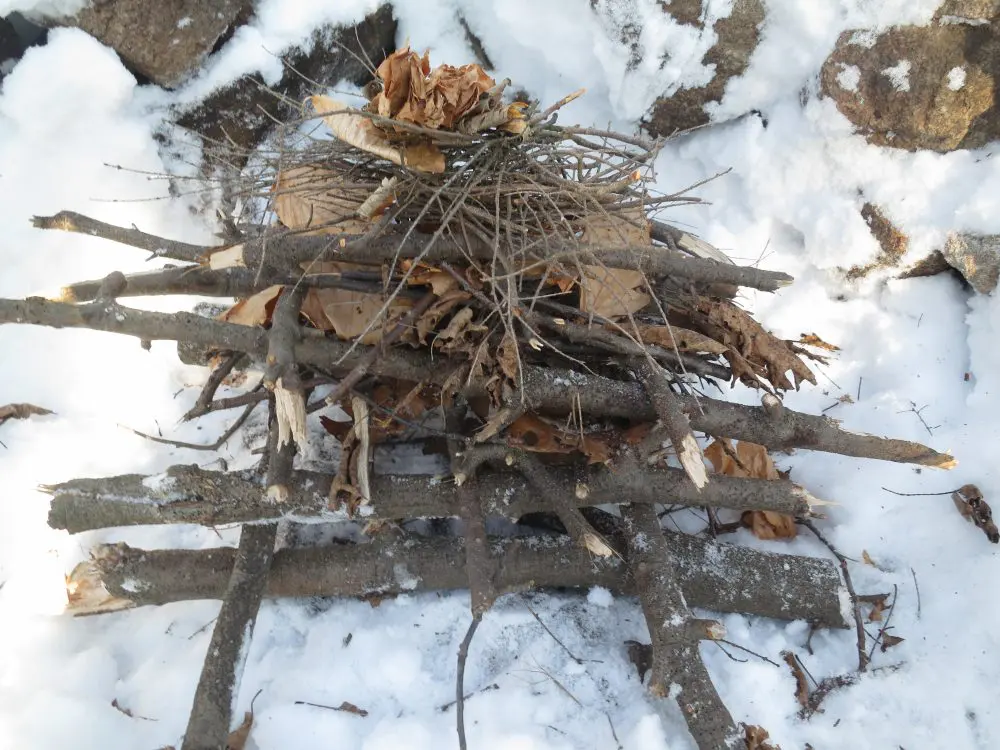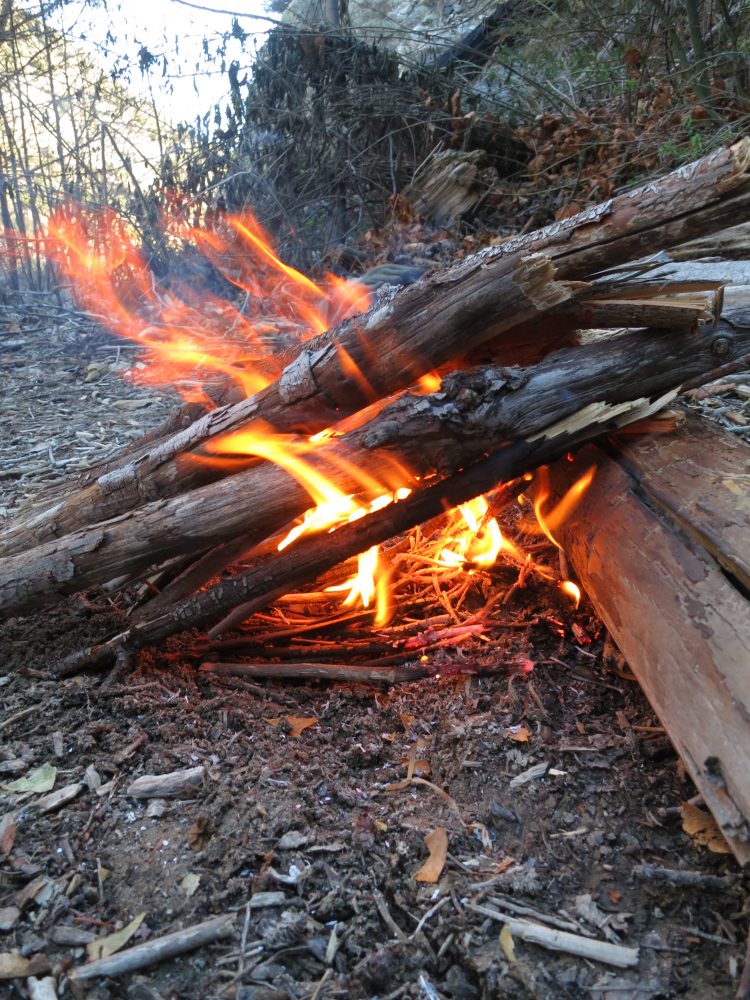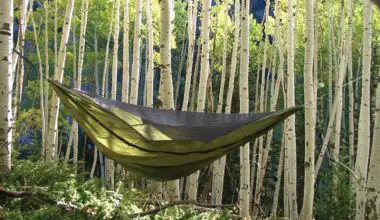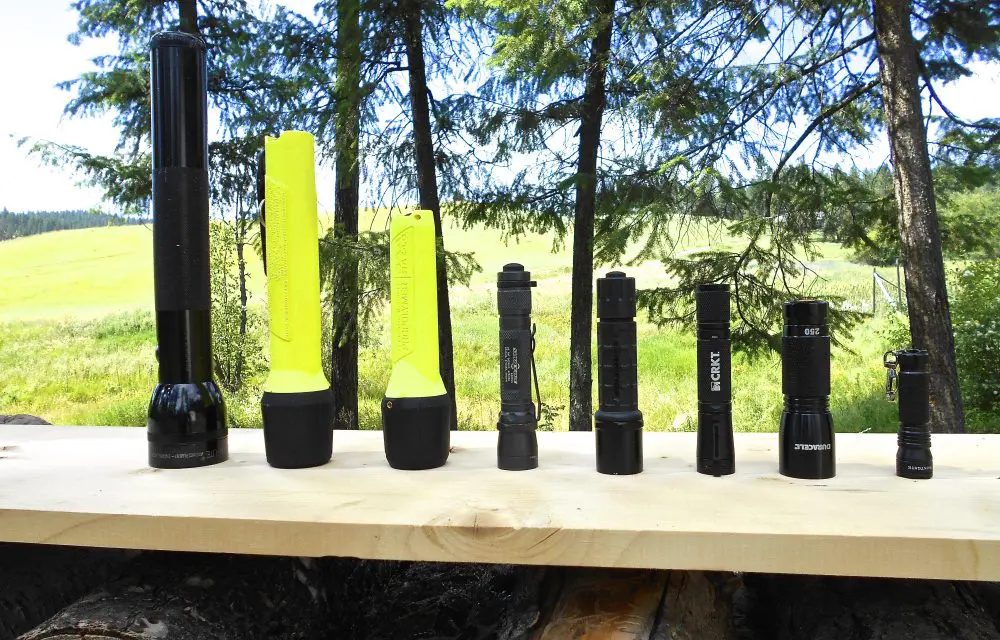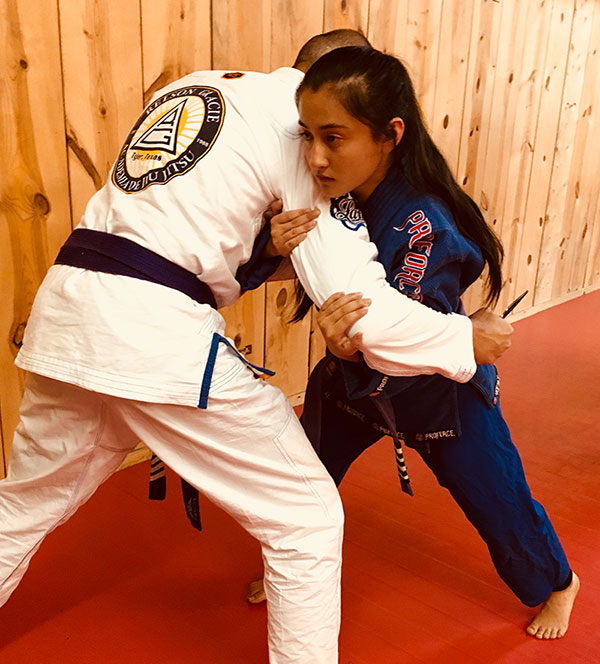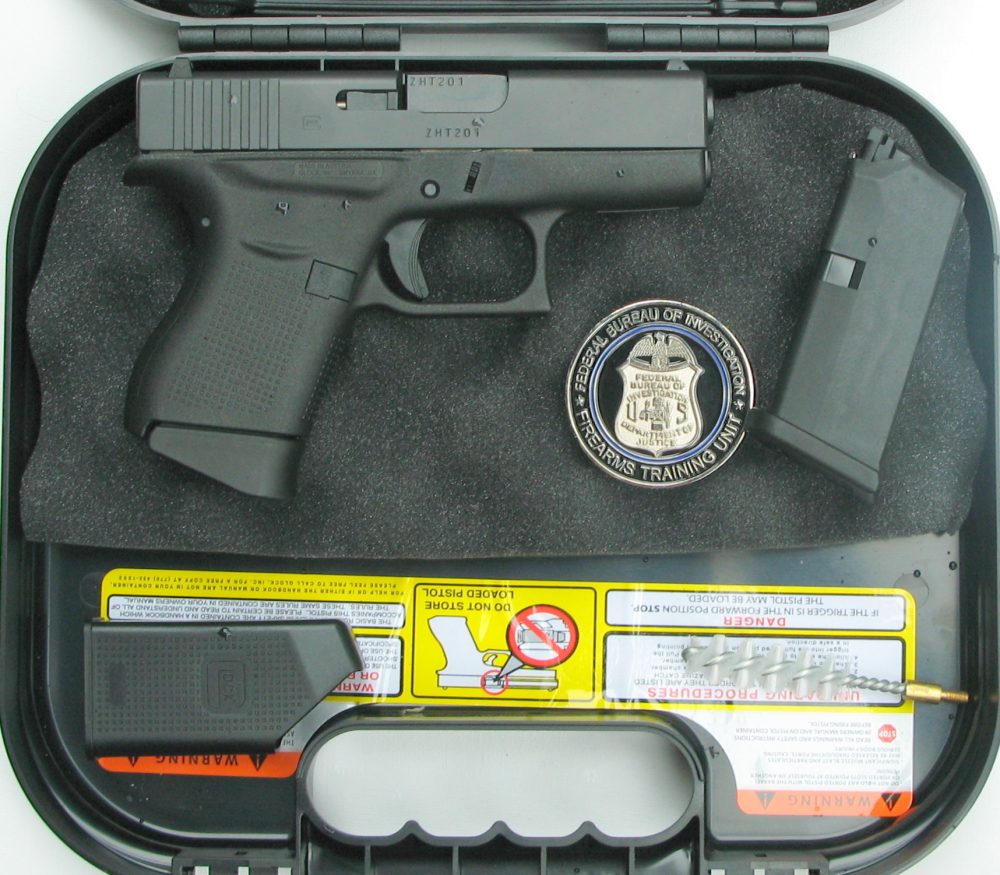The way an outdoorsman arranges his firewood for a campfire, cook fire, signal fire, council fire, or just a quick boil is generally called a fire lay.
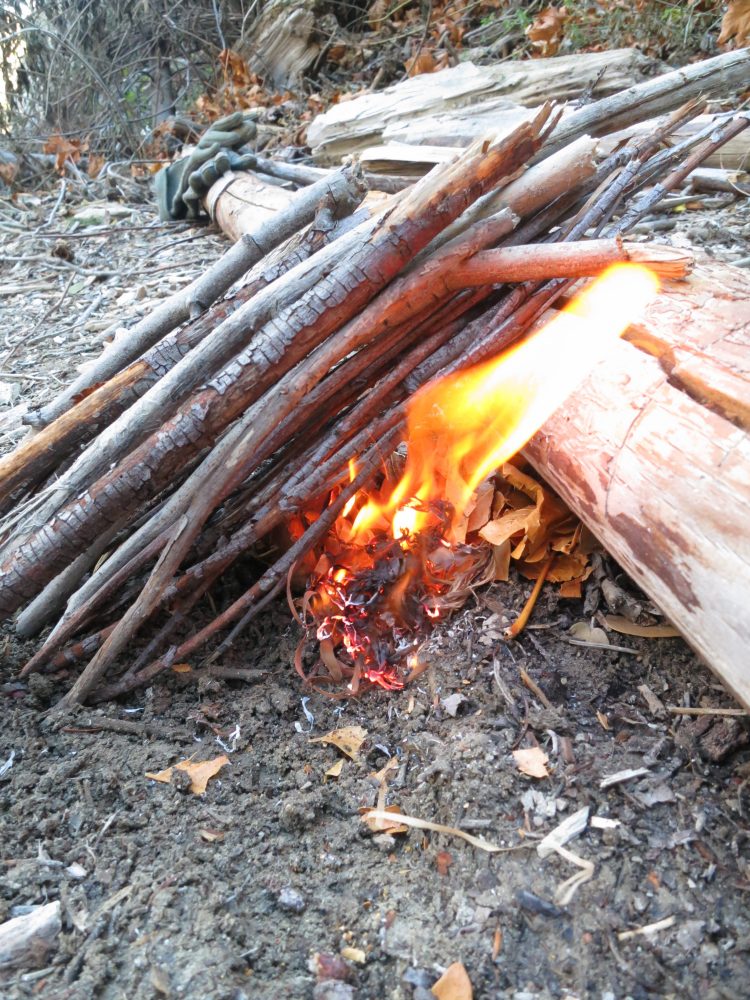
Let’s go back to what it may have been like for most of us the first few times we tried to make a fire. Whether the fire was started with a lighter, matches, ferrocerium rod, or using another method doesn’t matter because, once it went ablaze, we then went scrambling around the woods looking for sticks, leaves and logs, often picking them up right off the ground where they are more likely to be damp. Sooner or later, the fire ended up in a smoky smudge. I don’t know if anyone can relate to this story, but such were my first few experiences making a fire.
Table of Contents
A SYSTEM
I like to consider a fire lay as a system that works because it utilizes the most important things needed for a successful fire. Of course tinder, kindling and fuel need to be collected from dry standing wood, but then what?
Once these are gathered, how the fire is built is often the difference between a successful fire and the old “smudge.”
The acronym HAF—Heat, Air, Fuel—helps you remember what goes into a fire and what is needed to allow it to continually burn. Every fire is comprised of these three elements. Take away just one and there is no fire.
Fire lays use not only these three elements but also basic fire-building techniques such as lighting the upwind side so the wind blows the flame into the fuel, making sure to leave enough air space between pieces of wood so as not to suffocate it, and building the fire up rather than flat and wide. Building the fire up takes advantage of the hot rising air and flames.
After the lean-to fire lay was ablaze for a while, author added larger wrist-thick fuel to the fire. From this point, it is easy to make a Long Fire or Hunter’s Fire for warmth and cooking.
TEEPEE FIRE LAY
Arguably the most commonly seen fire lay in movies, diagrams and photographs is the teepee fire.
This fire is easily constructed by first setting up the structure of the teepee by using three finger-thick sticks that have a natural Y crotch to them. Simply arrange the three Y pieces so they lock together and form a teepee/tripod shape. Green sticks can also be used for the initial tripod, as they are only there to hold up the structure. If thin dry sticks are used for the tripod, they will quickly burn up and the whole affair will topple down, so when using dry sticks, make sure they are at least finger thickness.
The next step is to determine which direction the breeze is coming from and start to lean thin toothpick/matchstick-diameter sticks around the teepee structure, leaving a small opening where the breeze will hit the teepee. Continue leaning sticks and work up to pencil-thick and then finger-thick sticks. It is important to leave enough air space for the fire to breathe.
Author made a log cabin fire lay on top of snow-covered ground in the winter. Tinder was placed at the top to avoid any dampness and heat loss from the ground.
At this point, resist the temptation to add larger pieces of wood, as it will only do two things: block air and knock the teepee over. The final step is to place the tinder bundle into the small opening of the teepee and light it.
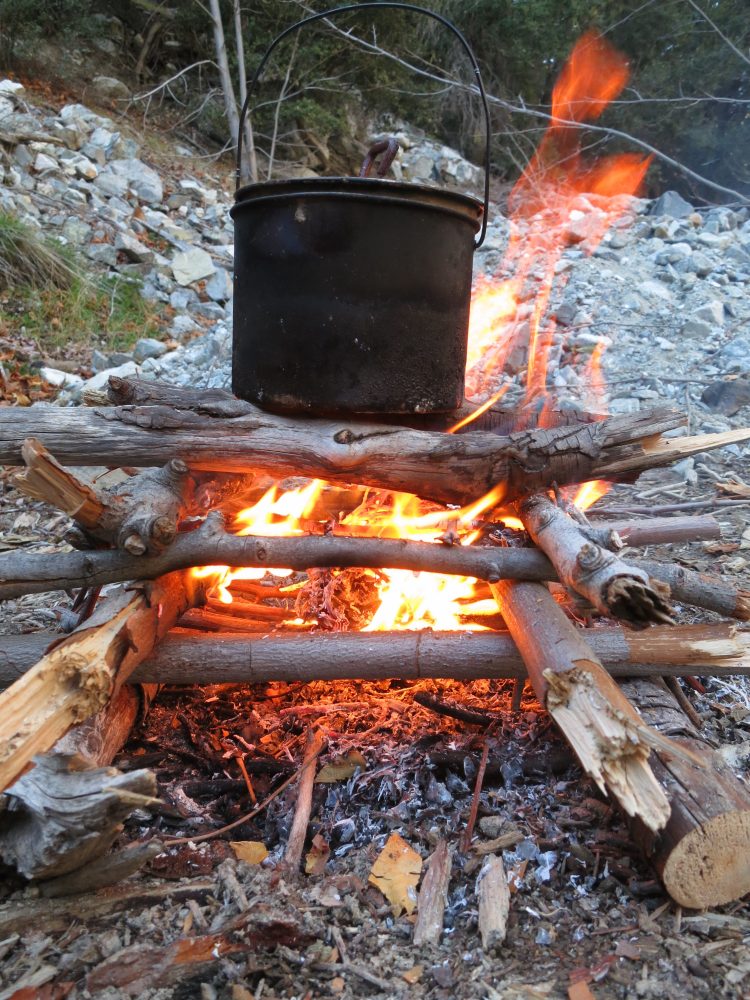
The teepee fire lay produces a fast flame and eventually falls into itself, creating a pile of coals. The structure uses the hot rising air and concentrates it up to a single point, which is useful for boiling water in a single pot above the teepee. Once the teepee collapses, larger pieces of wood (fuel) can be laid crisscross on top of the flames.
LOG CABIN FIRE LAY
The log cabin is an old classic fire lay that was used for starting a quick blaze that would turn into coals for a cook fire. One version of this fire lay is ignited from the bottom, and one type is ignited from the top. Here I will discuss only the type that is ignited from the top, for the added benefit of using the log cabin fire on top of wet ground and snow, thus keeping the tinder up away from the moisture on the ground.
The log cabin could be built on a platform of stones, bark or logs, and ignited from the bottom. If rain or snow is imminent, igniting the fire from the bottom could be beneficial, because the top layers would add protection from blown rain or light snow—shielding the valuable flame while providing hot rising air.
To construct a log cabin fire lay, start with two wrist-thick pieces of wood about seven to ten inches long. Lay them parallel to each other, about five inches apart. Add two more pieces of wood that are a little thinner in diameter on top of and perpendicular to these bottom pieces, to make a square foundation. The idea now is to do like we did when we were kids playing Lincoln Logs and build a cob house, alternating the sticks in opposite directions with each level.
In two levels, make sure to add a course of small pencil-thick sticks to form a platform, and stuff this area with dry leaves, grasses and tinder. Continue to lay thinner and shorter pieces to form a cabin or pyramid shape.
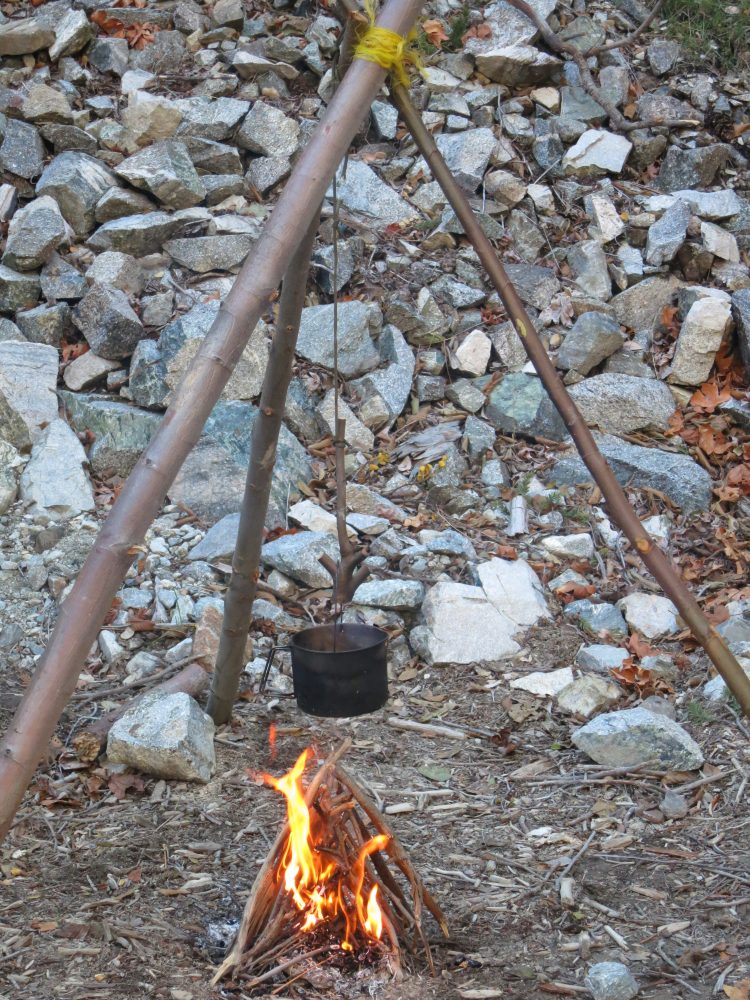
On the very top, make sure to have a good supply of small toothpick/matchstick-thick pieces of kindling, and add the tinder on the very top of this. Once ignited, it should take very little maintenance, and the “log cabin” will burn down to the thicker pieces.
One very cool thing about the log cabin fire lay is that a frying pan or kettle can be placed on top of it for a very quick boil, due to the effectiveness of the hot rising air. But be warned, I have seen many meals scorched and water boiling over using this method.
LEAN-TO FIRE LAY
My personal favorite is the lean-to, because it’s both simple and effective.
To make a lean-to fire, start with a thick log around bicep to thigh thickness. Lay it parallel to the breeze, then take thin matchstick-thick sticks and lean them at an angle against the log. Continue adding pencil- to finger-thick sticks. Finally, add the tinder under the lean-to on the upwind side and ignite. The breeze will spread the fire through the natural air passage of the lean-to.
Once it is ablaze, add larger wrist-thick wood to the fire in the same fashion. I like to use this fire lay for a cook fire by adding another log of the same thickness parallel to the first log, which turns it into a Hunter’s Fire or Long Fire.
Use fire lays as a way to start a larger fire and transition into other fire lays. Have additional small fuel wood and kindling ready in case they are needed to get back on track.
